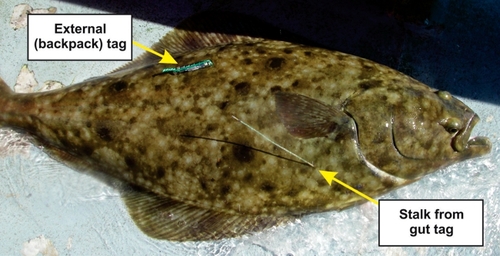Environment Fishery Halibut Link
There is growing anger to the north of us in Alaska, over halibut allocation policies by the US National Ocean and Atmospheric Administration. If Kitimat is the centre of opposition by the recreational halibut sector in British Columbia, in Alaska, much of the opposition is in the town of Homer.
The Homer Tribune is reporting: Chamber members vote to oppose one-halibut rule
Business members of the Homer Chamber of Commerce voted Sunday night in favor of a letter to the National Marine Fisheries Service that asks for another look at how halibut are allocated…
Members request NMFS Catch Share Plan allocation to closely approximate the Guideline Harvest Level for Area 3A, the central Gulf of Alaska including Cook Inlet and Homer…
The Catch Share Plan proposal to reduce halibut take on chartered sport fishing boats is viewed as a measure that could damage the charter sport fishing industry in Homer as well as the town’s economy as a whole. That’s a problem for the whole town to deal with, since every bait shop, kayak rental and pottery shop is tied to it, business owners told the chamber….
“We have before us an issue that can break us,” said Jack Montgomery, owner of Rainbow Tours for the past 30 years. “This could tear our town apart.”
And an angry commercial fisherman, Erik Velsko, responds to the vote in this letter to the editor.
My quota has suffered substantial cuts over the last three years as a result of commercial legal halibut biomass decline, and the explosive unregulated growth of the halibut charter industry….Currently, based on 2011’s TAC I am legally able to harvest a little over half of what I had originally purchased, but I realize the resource is changing and the initial shares I bought were not a fixed amount. Fish stocks rise and fall just as our stock market does for a number of reasons and influences…..
Fisheries politics should not and should never be discussed by unqualified, uneducated members of a biased Chamber at the city level. The issues that are at the forefront of this discussion are not city issues; they are federal and they are international and there are two perfectly capable, if not perfect, agencies that do deal directly with the issues at the forefront of this debate – the International Pacific Halibut Commission and the National Marine Fisheries Service…. here is a reason for the Catch Sharing Plan that goes above and beyond what you and I know about the halibut stocks on an international level, not just what goes on in Cook Inlet and Kachemak Bay at the end of a fishing pole.


